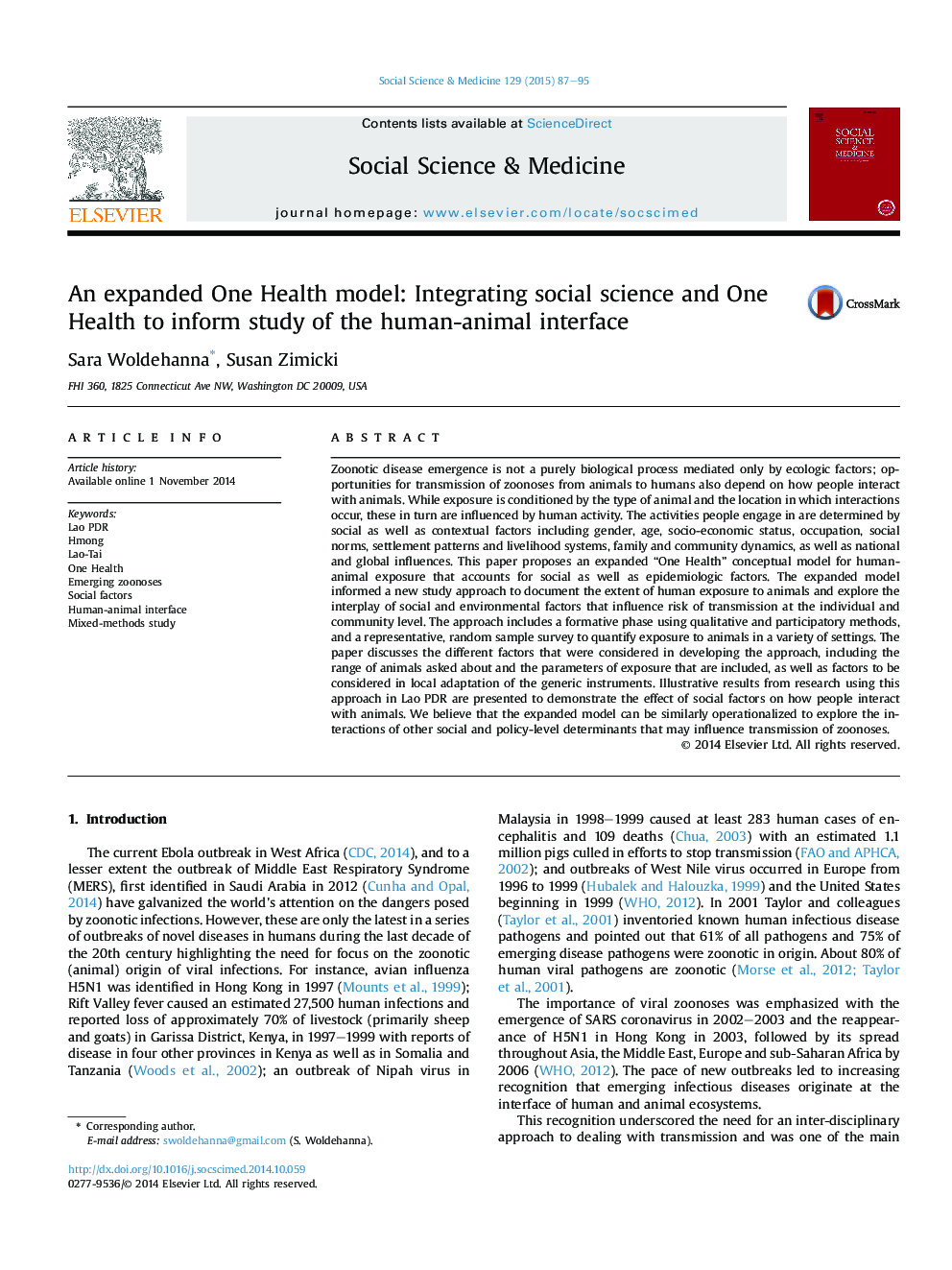| کد مقاله | کد نشریه | سال انتشار | مقاله انگلیسی | نسخه تمام متن |
|---|---|---|---|---|
| 952254 | 1476039 | 2015 | 9 صفحه PDF | دانلود رایگان |
• Zoonotic disease emergence is not a purely biological process.
• Animal-to-human transmission of disease depends on how people interact with animals.
• An expanded One Health model for human-animal exposure accounts for social factors.
• The expanded model was the conceptual basis for a human-animal exposure study.
• Illustrative results from Lao PDR demonstrate how social factors can affect exposure.
Zoonotic disease emergence is not a purely biological process mediated only by ecologic factors; opportunities for transmission of zoonoses from animals to humans also depend on how people interact with animals. While exposure is conditioned by the type of animal and the location in which interactions occur, these in turn are influenced by human activity. The activities people engage in are determined by social as well as contextual factors including gender, age, socio-economic status, occupation, social norms, settlement patterns and livelihood systems, family and community dynamics, as well as national and global influences. This paper proposes an expanded “One Health” conceptual model for human-animal exposure that accounts for social as well as epidemiologic factors. The expanded model informed a new study approach to document the extent of human exposure to animals and explore the interplay of social and environmental factors that influence risk of transmission at the individual and community level. The approach includes a formative phase using qualitative and participatory methods, and a representative, random sample survey to quantify exposure to animals in a variety of settings. The paper discusses the different factors that were considered in developing the approach, including the range of animals asked about and the parameters of exposure that are included, as well as factors to be considered in local adaptation of the generic instruments. Illustrative results from research using this approach in Lao PDR are presented to demonstrate the effect of social factors on how people interact with animals. We believe that the expanded model can be similarly operationalized to explore the interactions of other social and policy-level determinants that may influence transmission of zoonoses.
Journal: Social Science & Medicine - Volume 129, March 2015, Pages 87–95
